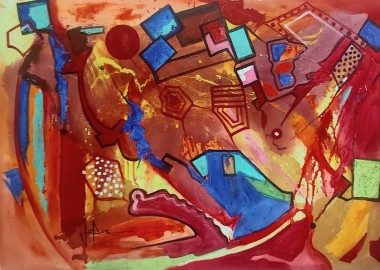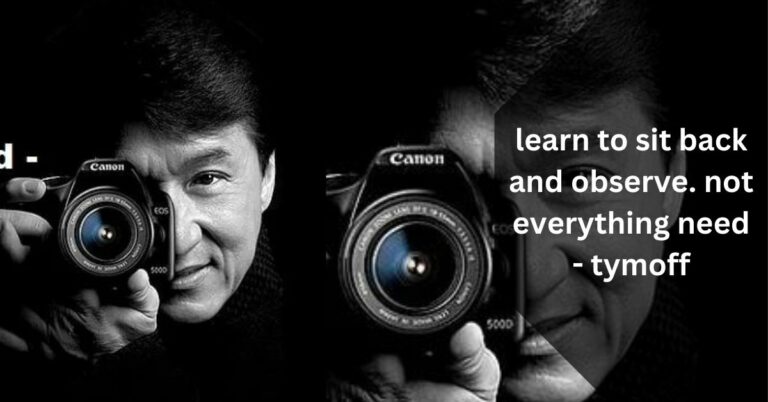Echo Nguyen Duy Tri’s “Acid Madness” stands as a testament to the surreal, captivating, and sometimes tumultuous experience of diving into the depths of psychedelic exploration. Released in 2023, this work pushes the boundaries of artistic expression, inviting viewers into a realm where reality blurs with imagination, and perceptions are reshaped. Let’s embark on a journey through the various dimensions of this groundbreaking piece.
The Artist Behind the Madness:
Before delving into the intricacies of “Acid Madness,” it’s crucial to understand the mind behind the creation. Echo Nguyen Duy Tri, a visionary artist renowned for his avant-garde approach, has carved a niche for himself in the realm of contemporary art. His work often delves into themes of consciousness, perception, and the human experience, offering viewers a glimpse into the depths of the psyche.

Deciphering the Visual Tapestry:
At first glance, “Acid Madness” overwhelms the senses with its kaleidoscopic array of colors, shapes, and patterns. Tri’s use of vibrant hues and intricate details draws the viewer in, encouraging them to lose themselves in the mesmerizing tapestry before them. Yet, beyond the initial spectacle lies a deeper narrative waiting to be unraveled.
Journey Through the Psychedelic Landscape:
As spectators immerse themselves in “Acid Madness,” they are transported into a psychedelic landscape where reality melds with fantasy. The imagery unfolds like a dreamscape, with swirling vortexes, geometric patterns, and otherworldly creatures inhabiting the canvas. Each brushstroke serves as a gateway to another dimension, inviting viewers to explore the recesses of their own consciousness.
Exploring the Depths of the Psyche:
Beneath the surface of “Acid Madness” lies a profound exploration of the human psyche. Tri’s work delves into the subconscious mind, unraveling the complexities of thought, emotion, and perception. Themes of introspection, self-discovery, and existential questioning permeate the artwork, challenging viewers to confront their own innermost thoughts and desires.
The Intersection of Chaos and Harmony:
In “Acid Madness,” chaos and harmony coexist in a delicate balance, mirroring the tumultuous nature of the human experience. While the imagery may appear chaotic and disjointed at first glance, upon closer inspection, a sense of order begins to emerge. Tri masterfully navigates the fine line between chaos and order, creating a visual symphony that resonates with viewers on a visceral level.
A Call to Expand Consciousness:
Ultimately, “Acid Madness” serves as a catalyst for expanding consciousness and transcending conventional modes of perception. Tri’s work challenges viewers to embrace the unknown, to venture into uncharted territories of the mind, and to question the nature of reality itself. In doing so, it invites us to embrace the inherent beauty and mystery of the human experience.
The Alchemy of Perception:
In this section, we delve into how Echo Nguyen Duy Tri employs visual alchemy within “Acid Madness” to transmute the raw materials of perception into a vivid and transformative experience. We explore the artist’s manipulation of color, form, and composition to evoke emotional and psychological responses in the viewer, transforming ordinary stimuli into extraordinary sensations.
Surrendering to Surrealism:
Here, we examine the Surrealist influences evident in “Acid Madness” and how Tri embraces the movement’s ethos of tapping into the subconscious mind to unlock hidden truths and explore alternate realities. We explore the juxtaposition of familiar and unfamiliar elements, the blurring of boundaries between dream and reality, and the liberation of the creative spirit from the constraints of rational thought.
The Dance of Light and Shadow:
This section focuses on the interplay of light and shadow within “Acid Madness” and its significance in shaping the mood, atmosphere, and narrative of the artwork. We explore how Tri utilizes contrast, shading, and chiaroscuro techniques to imbue the composition with depth, dimensionality, and a sense of dynamism, drawing viewers into a mesmerizing dance of illumination and obscurity.
Echoes of the Collective Unconscious:
Here, we delve into the archetypal imagery and universal symbols present in “Acid Madness,” reflecting humanity’s shared cultural heritage and collective unconscious. We examine how Tri draws upon mythological, religious, and mystical motifs to tap into deeper layers of meaning and resonance, inviting viewers to connect with the primal forces and timeless narratives that shape the human experience.
Navigating the Labyrinth of Interpretation:
In this final section, we explore the multifaceted nature of interpretation within “Acid Madness” and the myriad ways in which viewers may engage with and derive meaning from the artwork. We examine the role of subjectivity, context, and personal experience in shaping individual interpretations, highlighting the fluidity and ambiguity inherent in Tri’s work and the endless possibilities for exploration and discovery it presents.
Transcending Time and Space:
This section explores how “Acid Madness” transcends conventional notions of temporality and spatiality, creating a timeless and boundless realm where past, present, and future coalesce into a singular, eternal moment. We delve into the artist’s manipulation of scale, perspective, and non-linear narrative to disrupt traditional notions of time and space, inviting viewers to journey beyond the confines of the here and now into the infinite expanse of the imagination.
The Psychedelic Experience as Catharsis:
Here, we examine how “Acid Madness” serves as a form of catharsis for both the artist and the viewer, providing a transformative outlet for the release of pent-up emotions, traumas, and subconscious desires. We explore how Tri’s uninhibited exploration of the psychedelic experience allows him to confront and transcend personal and collective anxieties, facilitating a process of healing, integration, and self-actualization for both creator and audience alike.
Harmonizing Chaos and Order:
This section delves into the delicate balance between chaos and order within “Acid Madness” and the profound implications of this dynamic interplay for the human psyche. We explore how Tri harnesses the inherent tension between chaos and order to create a sense of equilibrium, harmony, and flow within the composition, mirroring the dialectical nature of existence itself and inviting viewers to embrace the inherent beauty and complexity of life’s contradictions.

Beyond the Veil of Illusion:
In this final section, we contemplate the existential themes present in “Acid Madness” and the profound insights it offers into the nature of reality, perception, and consciousness. We explore how Tri’s work challenges viewers to question the validity of their sensory experiences, to peer beyond the veil of illusion that shrouds everyday existence, and to glimpse the underlying unity and interconnectedness of all things. Through its exploration of metaphysical concepts such as emptiness, impermanence, and interdependence, “Acid Madness” invites us to transcend the limitations of ego and identity and to awaken to the infinite possibilities of existence itself.
Conclusion:
Echo Nguyen Duy Tri’s “Acid Madness” is more than just a work of art; it’s a portal into the furthest reaches of the human psyche. Through its vibrant imagery and profound symbolism, it invites viewers to embark on a journey of self-discovery and exploration. In a world where boundaries are constantly being pushed and perceptions are continually evolving, “Acid Madness” stands as a testament to the power of artistic expression to transcend the limits of the known and venture into the realm of the extraordinary.
Read more:




















+ There are no comments
Add yours